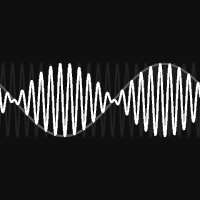Understanding Electromagnetic Radiation- Animation Video.
In physics, electromagnetic radiation (EMR) consists of waves of the electromagnetic (EM) field, propagating through space, carrying electromagnetic radiant energy.[1It includes radio waves, microwaves, infrared, (visible) light, ultraviolet, X-rays, and gamma rays. All of these waves form part of the electromagnetic spectrum.
Electromagnetic theory
Electricity and magnetism were once thought to be separate forces. However, in 1873, Scottish physicist James Clerk Maxwell developed a unified theory of electromagnetism. The study of electromagnetism deals with how electrically charged particles interact with each other and with magnetic fields.
There are four main electromagnetic interactions:
- The force of attraction or repulsion between electric charges is inversely proportional to the square of the distance between them.
- Magnetic poles come in pairs that attract and repel each other, much as electric charges do.
- An electric current in a wire produces a magnetic field whose direction depends on the direction of the current.
- A moving electric field produces a magnetic field and vice versa.
Maxwell also developed a set of formulas, called Maxwell's equations, to describe these phenomena.

Radio waves
Radio waves are at the lowest range of the EM spectrum, with frequencies of up to about 30 billion hertz, or 30 gigahertz (GHz), and wavelengths greater than about 10 millimetres (0.4 inches). Radio is used primarily for communications, including voice, data and entertainment media.

Microwaves
Microwaves fall in the range of the EM spectrum between radio and IR. They have frequencies from about 3 GHz up to about 30 trillion hertz, or 30 terahertz (THz), and wavelengths of about 10 mm (0.4 inches) to 100 micrometres (μm), or 0.004 inches. Microwaves are used for high-bandwidth communications, radar, and heat sources for microwave ovens and industrial applications.

Infrared
Infrared is in the range of the EM spectrum between microwaves and visible light. IR has frequencies from about 30 THz to about 400 THz and wavelengths of about 100 μm (0.004 inches) to 740 nanometers (nm), or 0.00003 inches. IR light is invisible to human eyes, but we can feel it as heat if sufficient intensity.

Visible light
Visible light is found in the middle of the EM spectrum, between IR and UV. It has about 400 THz to 800 THz and wavelengths of about 740 nm (0.00003 inches) to 380 nm (.000015 inches). More generally, visible light is defined as the wavelengths that are visible to most human eyes.

Ultraviolet
Ultraviolet light is in the range of the EM spectrum between visible light and X-rays. It has frequencies of about 8 × 1014 to 3 × 1016 Hz and wavelengths of about 380 nm (.000015 inches) to about 10 nm (0.0000004 inches). UV light is a component of sunlight; however, it is invisible to the human eye. It has numerous medical and industrial applications, but it can damage living tissue.

X-rays
X-rays are roughly classified into two types: soft X-rays and hard X-rays. Soft X-rays comprise the range of the EM spectrum between UV and gamma rays. Soft X-rays have about 3 × 1016 to about 1018 Hz and wavelengths of about 10 nm (4 × 10−7 inches) to about 100 picometers (pm), or 4 × 10−8 inches. Hard X-rays occupy the same region of the EM spectrum as gamma rays. The only difference between them is their source: X-rays are produced by accelerating electrons, while atomic nuclei produce gamma rays.

Gamma-rays
Gamma-rays are in the range of the spectrum above soft X-rays. Gamma-rays have frequencies greater than 1018 Hz and wavelengths less than 100 pm (4 × 10−9 inches). Gamma radiation causes damage to living tissue, which makes it useful for killing cancer cells when applied in carefully measured doses to small regions. Uncontrolled exposure, though, is hazardous to humans.






.jpg)
No comments:
Post a Comment